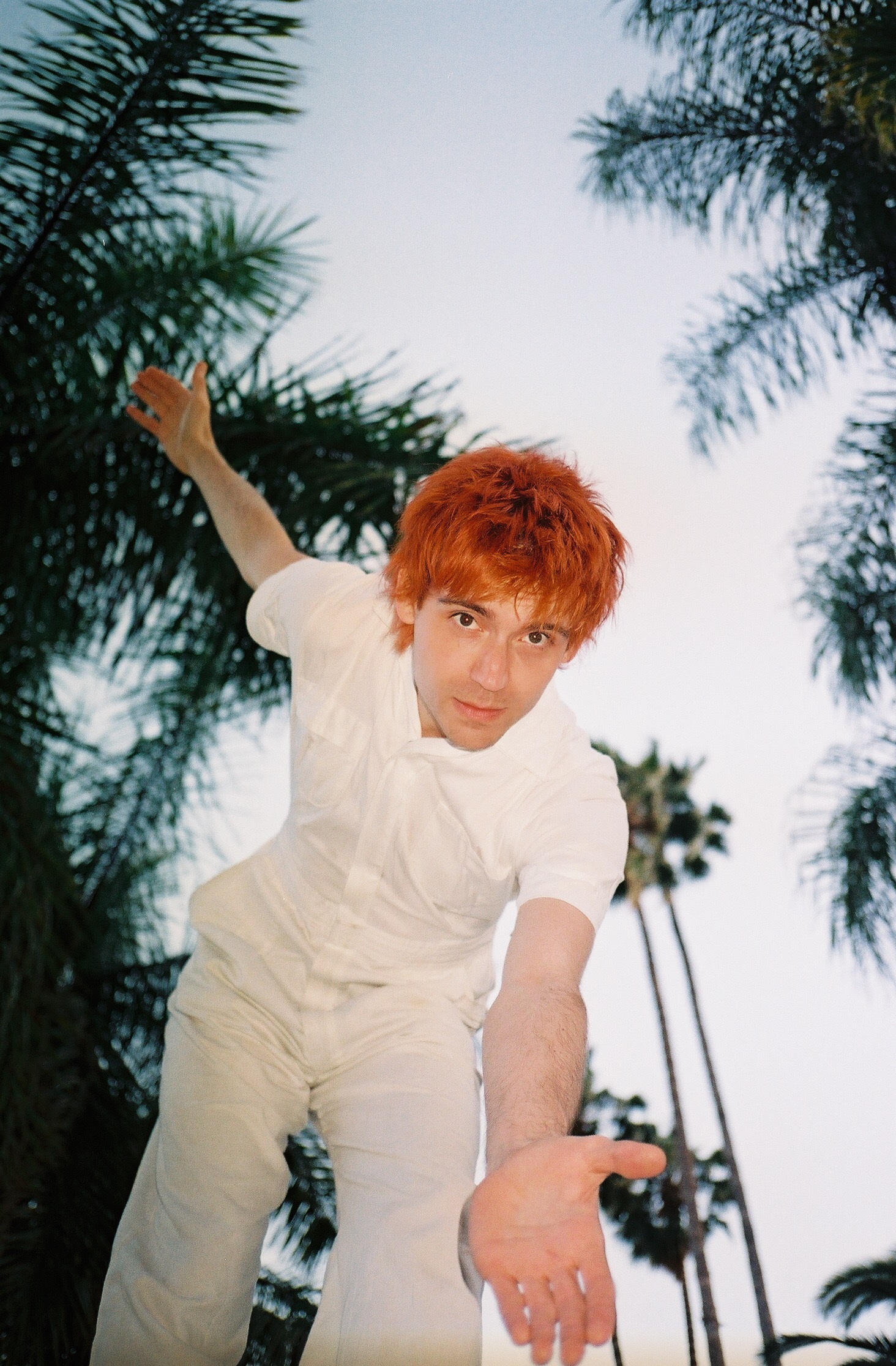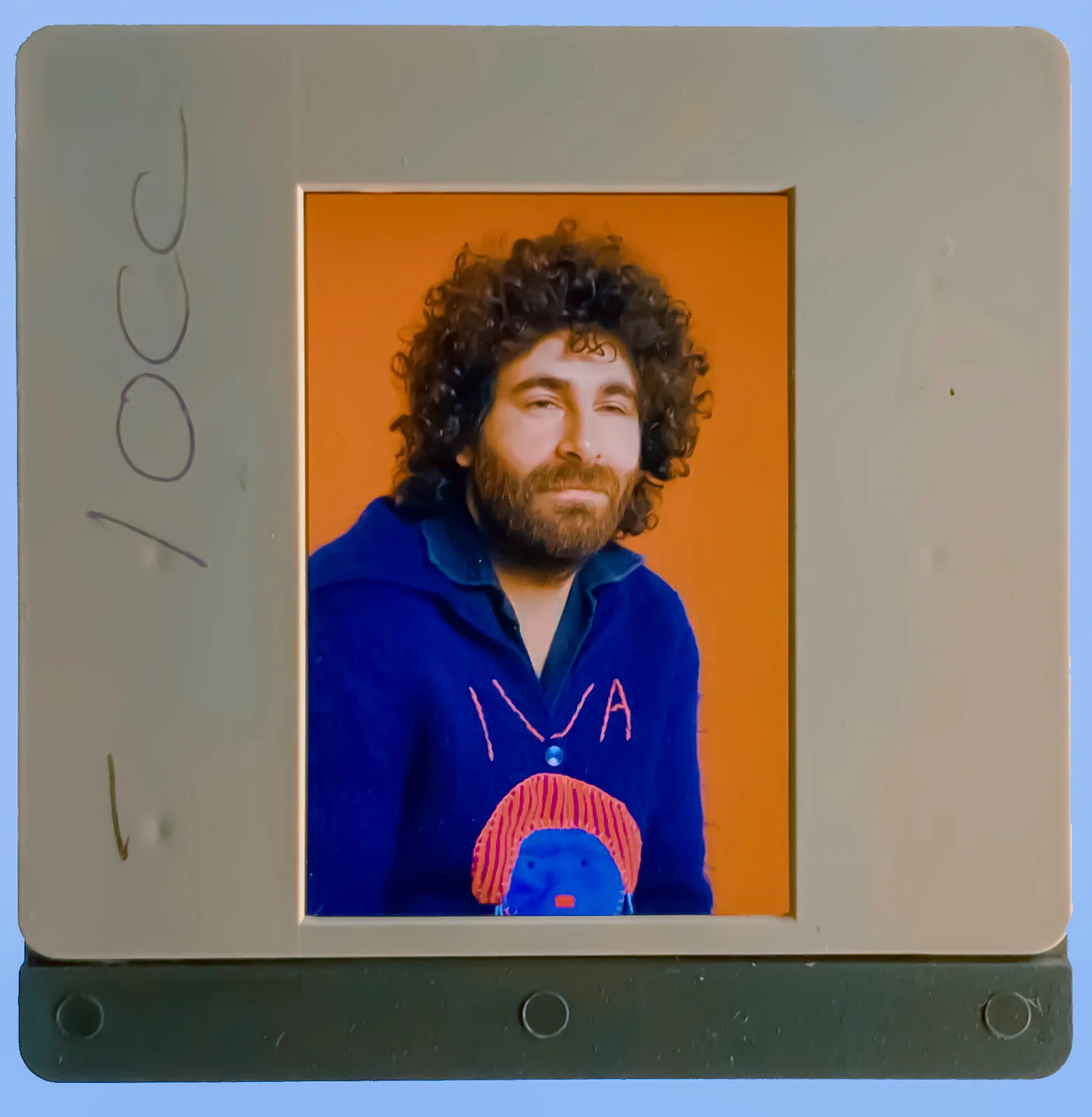Brion Starr Talks New Album Global Identity, Upcoming Projects, and More
Brion Starr is one of the artists we’re most excited about here at WMF in 2019, and with good reason -- his new album Global Identity (released May 2019 via Modern Sky in the U.S. and Taxi Gauche in Europe) is one of the most remarkable new releases we’ve heard this year. In a world increasingly inundated by unconscious scrolling and swiping, Starr’s Global Identity unassumingly presents listeners with the opportunity to focus and actively engage with a complete album as it deftly delivers a rewarding, collage-laden experience.
With recent support slots for the Chills, European touring, and an immersive hometown record-release show in New York, we were delighted to touch base with Brion for background to the new album, upcoming projects, and more. We were also lucky enough to receive from Miriam Marlene a fabulous and exclusive new photo set of Brion to accompany our one-on-one conversation with him.
Bobby Weirdo: You’ve been playing some European dates, and then you played a release show in conjunction with the release of your new album, Global Identity.
Brion Starr: Yeah, the release show was in New York at The 13th Street Repertory Theatre -- it has been there since ’72!
BW: You described that show as “immersive”, and I was wondering what that might mean in this context.
BS: It involved stage design. There’s a song on the album that is based around loops that I made, so we did a band performance, and then I essentially did a live mix of those loops using the same process I used when I recorded the record. I’ll probably never do it again, because it’s really nerve-wracking.
First we played the album in sequence with all the band songs, then there was the ambient loop piece that was followed by another song which is basically just harmonium, bass, and a little bit of percussion. That’s the complete album [played live].
BW: How much touring will you be doing for Global Identity?
BS: We are definitely going to be doing some touring for Global Identity, but I think the majority of touring will start closer to the end of this year when its sister album comes out.
BW: I wanted to ask you about that album. Will it be from the same recording sessions that Global Identity came from?
BS: That album is part of the same sessions. We intended to go into the studio for about a month and we ended up being there for three months because the music just kept coming. So the sister album will come out around November, which will be sort of part 2 to Global Identity.
BW: You’ve mentioned that a recent Japan tour was “perfect.” What was it about the tour that was so remarkable?
BS: I feel like maybe the Japanese audience made a connection to that album. In America and Europe you feel discouraged sometimes, being a smaller artist who not a lot of people have heard. But on that Japan tour almost one year ago, we were showing up to venues that were packed. The most surreal thing was when we played a show in Shibuya, and there was a group of people in the front row singing the words. After the show, people came up to say hello, and I realized that because their English wasn’t very good -- and the communication between us was touch-and-go -- they must have learned the words phonetically.
It’s just very endearing to work really hard on something, and then go to a faraway place and meet some people who are really connected to what you’re doing, even through a translational barrier like that. So that was probably the highlight of that complete first album cycle.
BW: The recording sessions for the albums we’re talking about were done at a renowned studio, and I was curious about the writing, recording, and editing process. How much of Global Identity was composed there on-site, and how much of what we hear is the result of post-production/editing? The album’s flow is unusual with some of the abrupt endings and sound collage elements.
BS: Yes, we recorded at Konk Studios in London. There was actually very little editing, believe it or not. We rehearsed it live ahead of time to feel like there were those cuts. I wrote some of the songs on the record in a cut-up way. The theme of Global Identity is cut-up and collage-style writing, so some of the music is a bunch of songs I wrote, cut up, and re-arranged into new pieces.
Then a lot of the lyrics are also cut-up lyrics that I wrote and re-arranged. The album cover and inner sleeve are imagery from the last two years. The image of me is from a previous press photo that we published, the background is a spread I found in an old Time magazine, and the imagery inside the album is from a café that we were going to a lot when we were on our Japan tour... so everything on this album is purposefully cut up and collage-based.
BW: A lot of the discussion around your work has been no wave based, but the cut-up approach also evokes William S. Burroughs.
BS: Definitely. I’ve loved Burroughs since the time I first read him, and I’ve always wanted to do something like this. It’s also indebted to [Brian] Eno. My friend Robbie [Wood] -- who plays on the album -- gave me a set of the oblique strategies cards for my birthday, and we used those as well. I always wanted to write this sort of collage album, and I was really excited to finally get the chance to do it.
BW: Along with the no wave associations with your music, there’s also the related association of New York. I’m curious what today’s New York might mean to your music.
BS: My New York is singular in a way, because I have a space that I live and work in, and I have a studio in that space. We don’t record our albums there, but it’s a good harbor for experimentation.
I don’t think my music is particularly no wave influenced in sound, although there are certain [no wave] aspects. The experimental aspects behind a lot of what we’re doing are really about choosing the things we are interested in and exploring them to the fullest logical extent. And I guess that was the motivation of that entire scene -- let’s make music with a lot of feeling, and we don’t really need the traditional know-how of a musician. But for me, I grew up playing music since I was pretty young, so I do have a traditional sense of being a musician. But I still want to experiment, take my knowledge, and explore it as far as I can. I’m not the best musician -- I am most interested in trying new things and pushing my limits.
BW: You’re somewhere in the process of writing and making a movie. Is that happening?
BS: It is. It’s really stressful; it is so much work.
BW: What’s stressful about it?
BS: I’d never made a movie, and I was planning on making it in the capacity of an independent film with a very low budget. I’ve been lucky enough to have a major film production company become interested in the film, so now I’m working on developing it with them. We have a pretty hard deadline for the script to be finished by September, so hopefully it will go into production in 2020.
BW: Is there anything you’re OK sharing about the film at this point, or is it still secret?
BS: I can’t talk about who I’m doing it with, because it’s not definite yet, but I would call the film a day-in-the-life kind of film. It’s not necessarily real-time, but it owes a lot to the idea of going on a journey with the character in the same way you do in Slacker or Downtown 81, which are both really big inspirations for what I’m doing with this film, as well as the Situationalist concept of dérive and the novel The Crying of Lot 49.
You have to really pay attention to the character and what’s going on in their life -- it also loosely ties into what we’re doing as a band. That sounds vague, but it’s hard to put into words at this point. It’s a journey.
BW: Is the idea of Noh Theatre something to which your newer work is still connected, or was that something particular to the Noh Starrs?
BS: It’s definitely something that’s always in the back of my mind, and something that I’m really interested in. There’s a certain theatrical aspect to what we’re doing [now] but I’m not exploring Noh Theatre in the traditional sense.
I recorded the [And the Noh Starrs] album with a group of musicians in Los Angeles from various bands, and I felt the need to credit them as their own entity because they’re all very talented musicians in their own right. At that time, I was deeply interested in Noh Theatre. And I still am, but I’m not connecting the history of Noh Theatre to anything I’m currently doing.
Another aspect that really inspired the Noh Starrs is what Damo Suzuki has been doing with his current project, where he travels around playing with different groups of people every night and calls them “sound carriers”. I get really bored playing the same songs over and over again, so I [like] this idea of changing members of the band and [playing] creative new live versions of the songs.
BW: Some of the Noh Starrs personnel is the same on Global Identity, right?
BS: Yeah, so Robbie – who played on the first album – was a big part of writing this album. Lida was also a contributor, and then we had some new additions as well. These people have since left the project to work on their own projects. This is life, -- always changing, [and] maybe one day they will be back.
The personnel may have been the same, but the process was completely different. One instance: there’s a group of four songs that we did in the studio, which all run into each other. These songs were written [ahead of time], but we rehearsed them live. We basically played them as one long song in the studio, and it sounds like they’re cut and smashed together -- in a more modern sense -- but we actually did many live takes in the studio until we got the right one.
It starts with a song called “Down (Underground)”, and it ends with a song called “Come Eschaton”, and they all run into each other. So they’re four separate songs but they run as one piece.
BW: And the two tracks in the middle of the ones you mention are “Faculty of the Senses” and “Time Is….”, right?
BS: Yeah, and we took the approach of a strong cut that the earlier songs on the album -- which were also recorded live -- have as well. On the whole album, there are maybe one or two physical cuts. Everything is pretty much live.
BW: I wanted to touch on the push-and-pull of Global Identity. Is there something significant that happened between And the Noh Starrs and the period when you wrote and recorded Global Identity? Are they two distinct projects? It feels like the experimental aspects come through stronger in Global Identity than they do in And the Noh Starrs.
BS: Definitely. The whole Noh Starrs project was heavily indebted to the idea of a revolving cast of musicians -- always changing, always changing. And I’m still interested in that idea, but at that time it was about “I have these chords, I have this structure, and I have these lyrics, but let’s go into the studio and record an album off-the-cuff.”
Global Identity is more about, “I have these songs and this idea of a collage-based album. Let’s go into the studio, take our time, and focus on making it a more hi-fidelity, focused work.” [The idea is] to make it into something which is old, but [also] new. The main difference is the focus more than the writing. It’s still the same person writing the music --- it’s just a drastically different approach.
The previous record was so based on this group of people who got together in the studio and just did the thing. This album is more about having collaborated with a lot of different people in the last two years, and honing in on what the most important aspects of the album would be via that experimenting. The people who played in the studio on this album aren’t the only people who contributed to this album.
In an era when you can just go on your computer and record an album in any way you like with a pretty satisfactory sound, this album was really about experimenting with different people over two years and honing ideas into a concise thing. Then, taking a group of people I’m close with and going into the studio to play those ideas until they were concise live takes. There’s something special about recording a song live, and trying and trying until you get this thing that feels like it has a bit of magic in it, and I think that’s a bit lost in the current climate of music.
I wanted to really focus on that, and that’s what this whole album is about. That collage aspect that I was personally interested in, and also the idea of getting together with a group of people, really connecting with each other, and making something that captures that sense of togetherness, which has the right feeling.
You can listen to and purchase Global Identity here.














